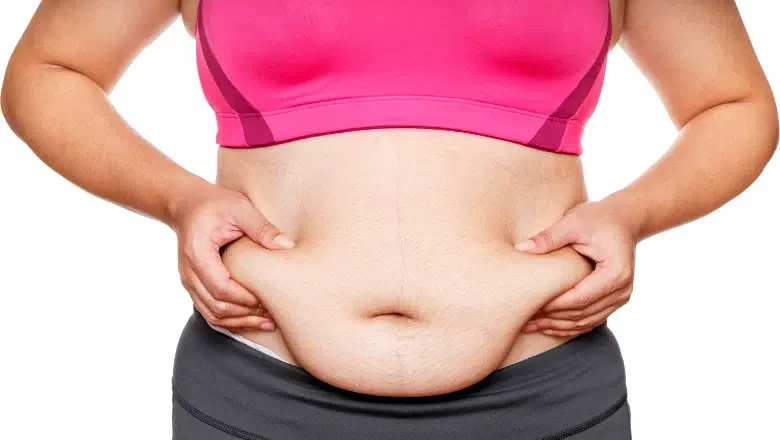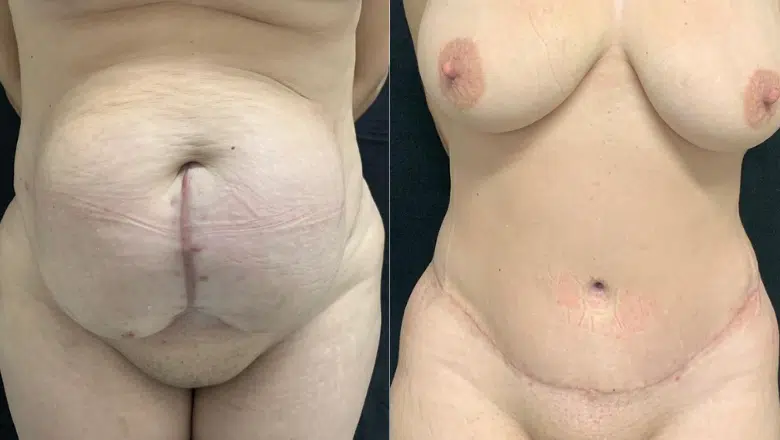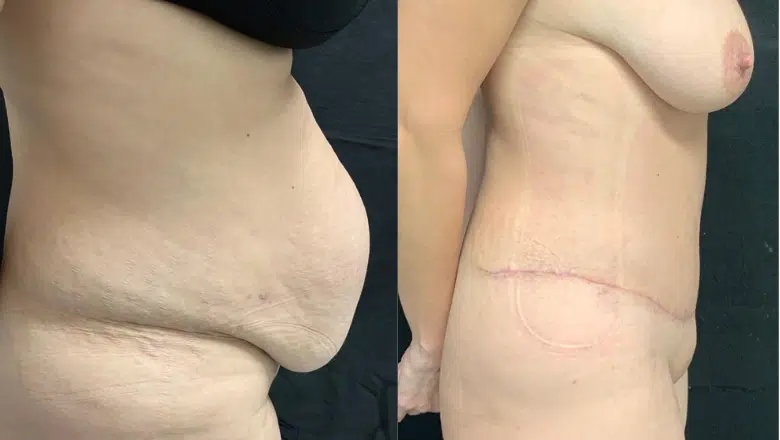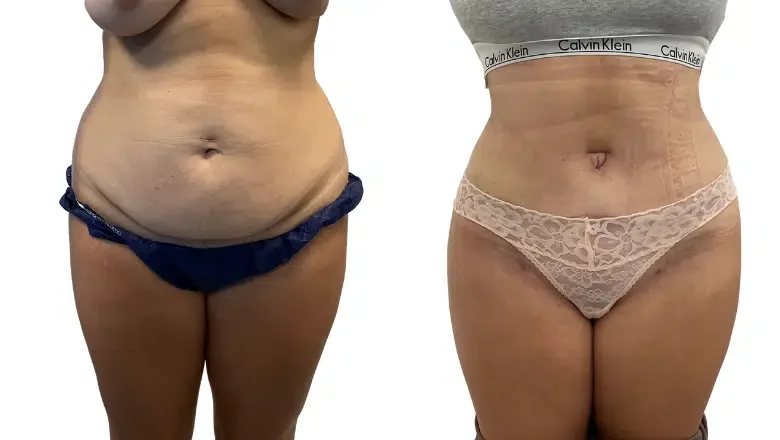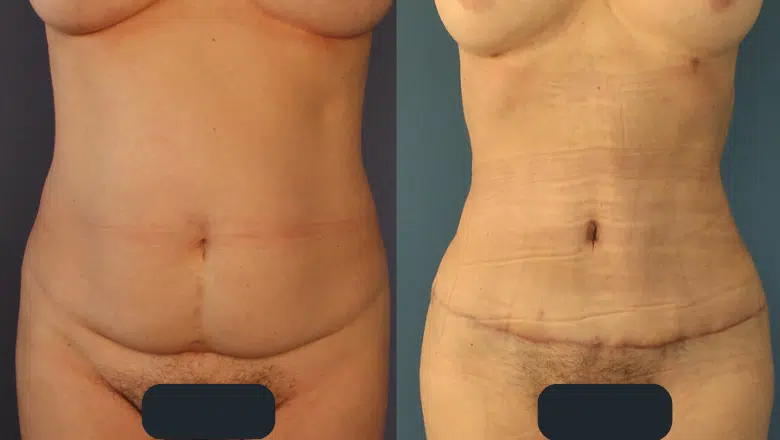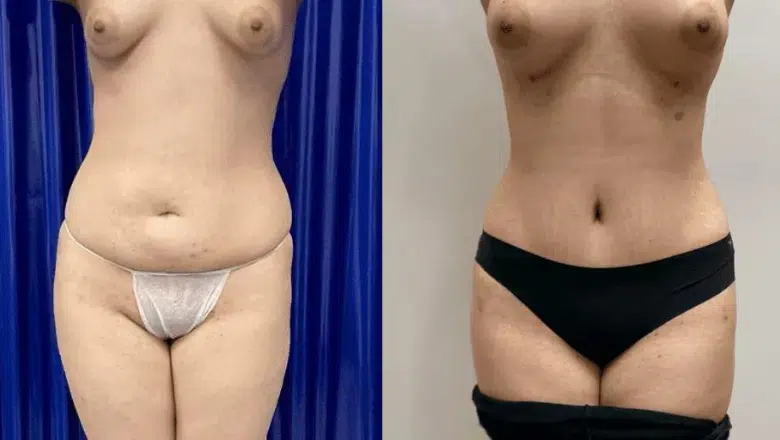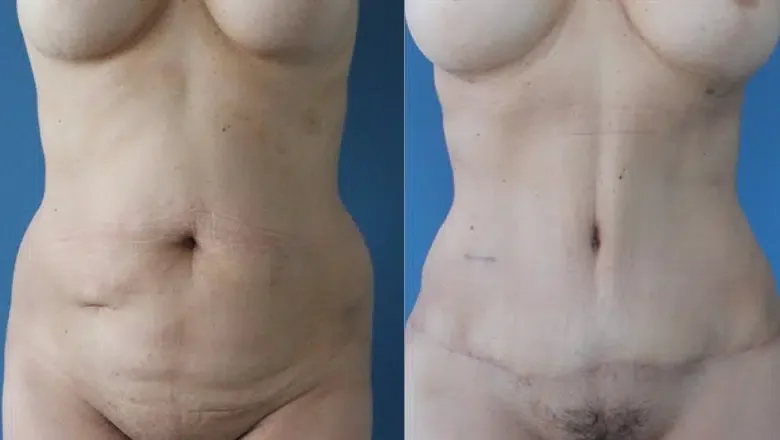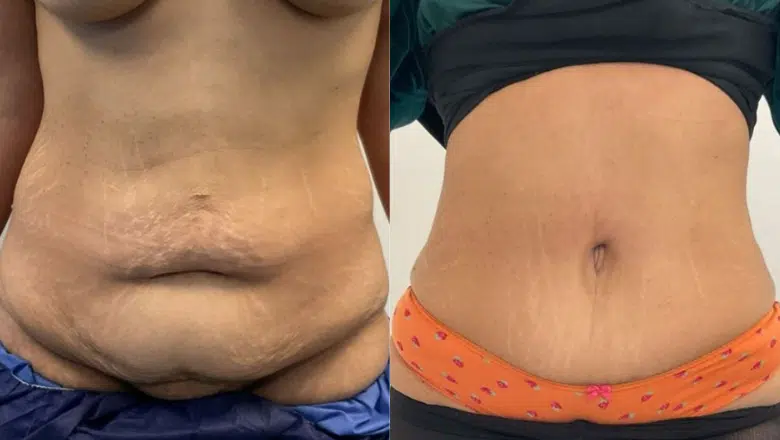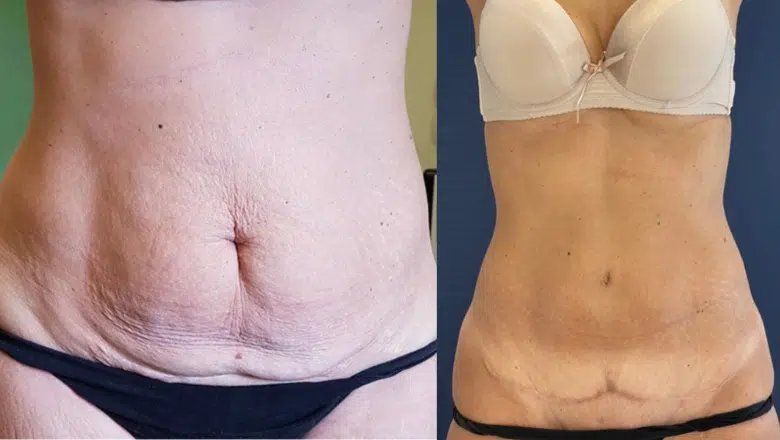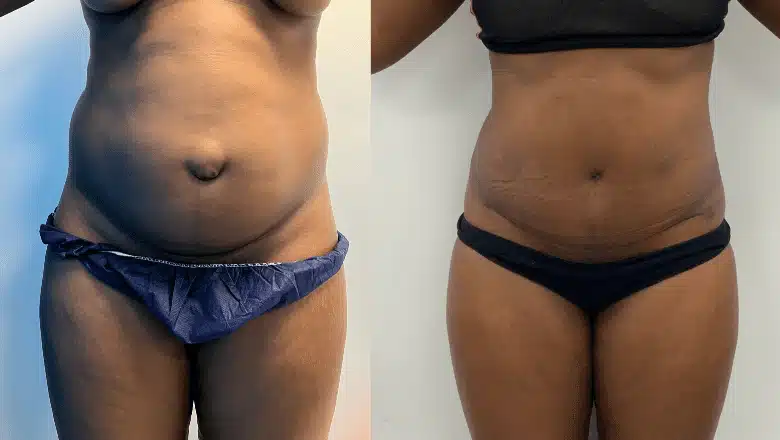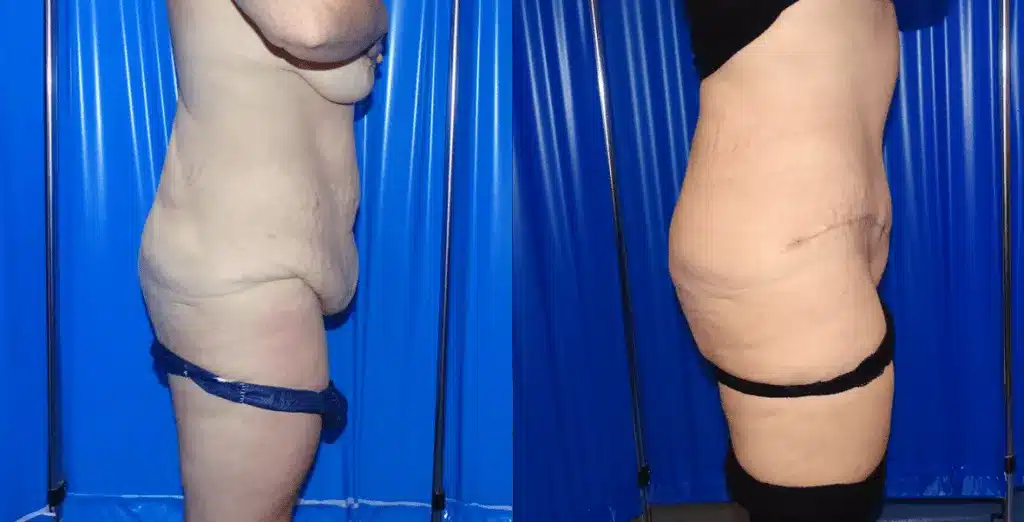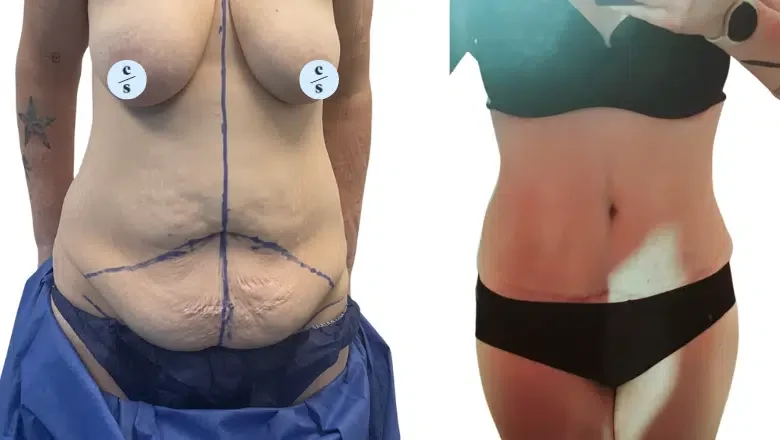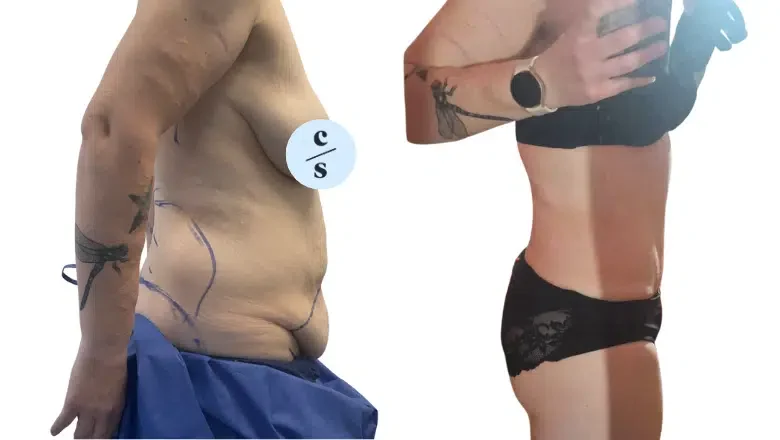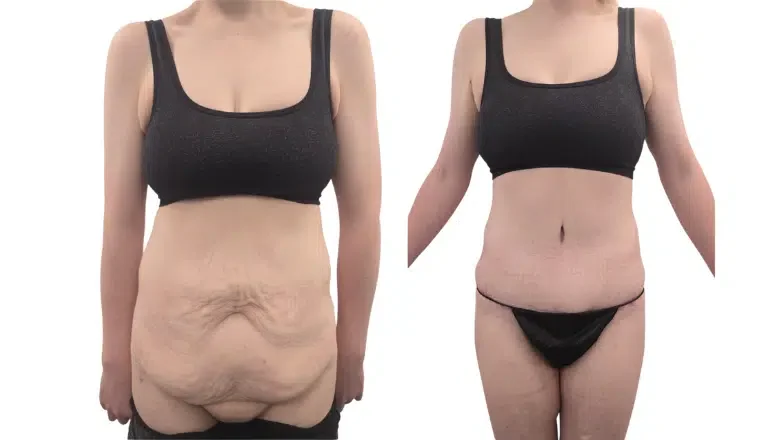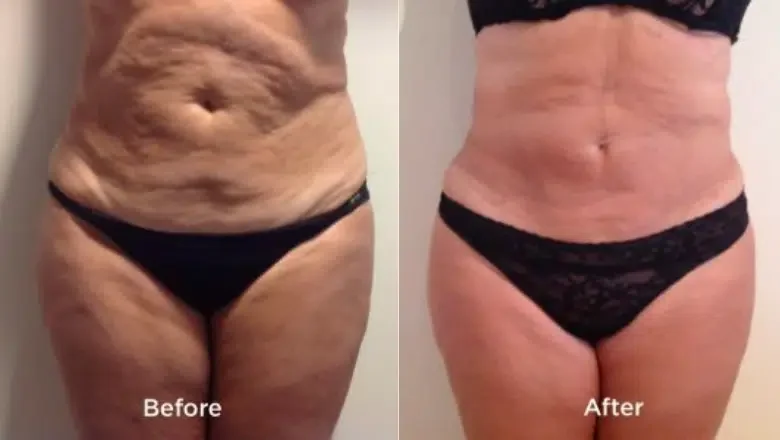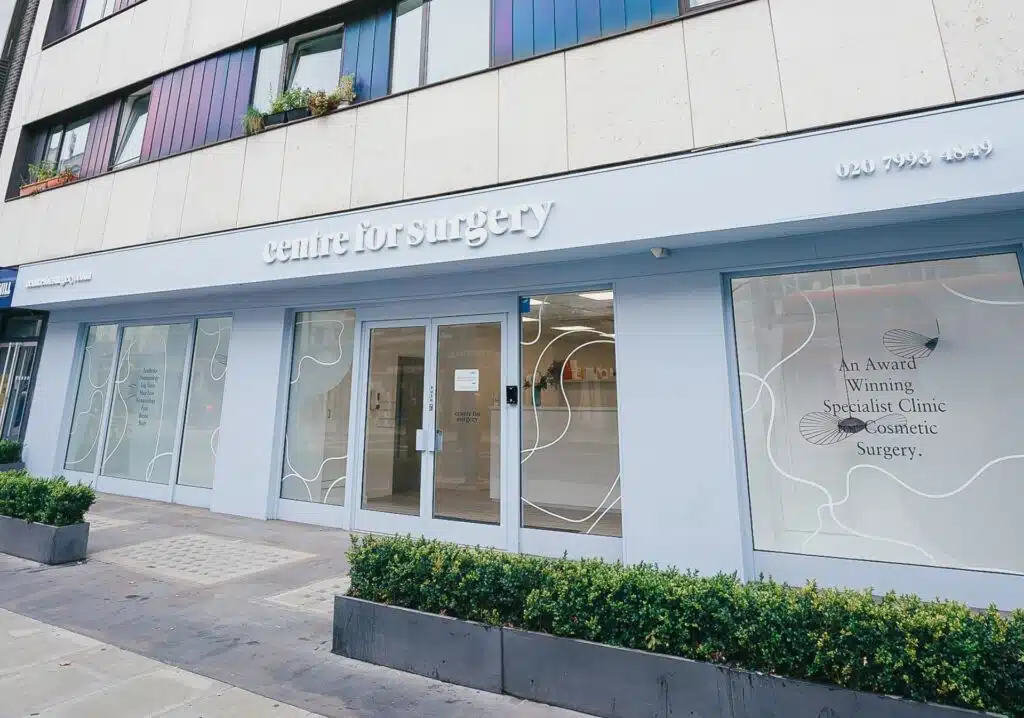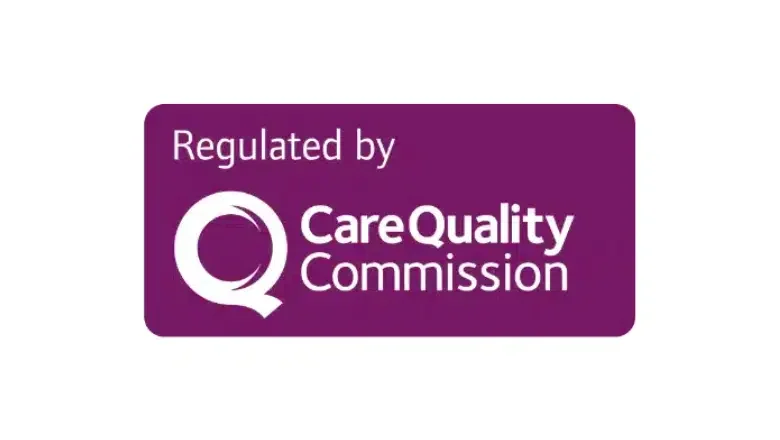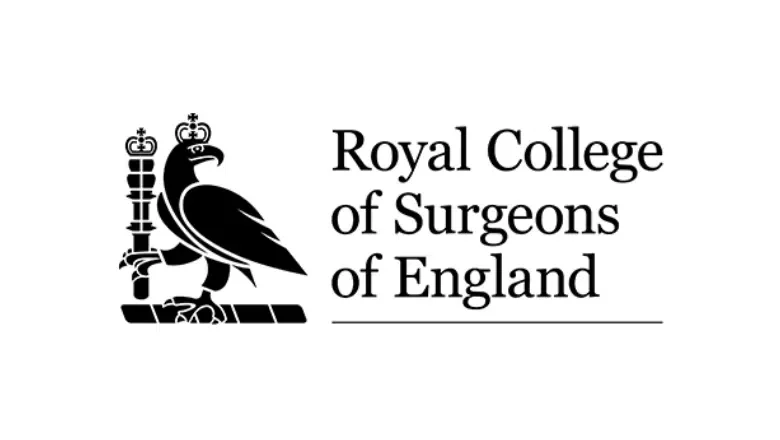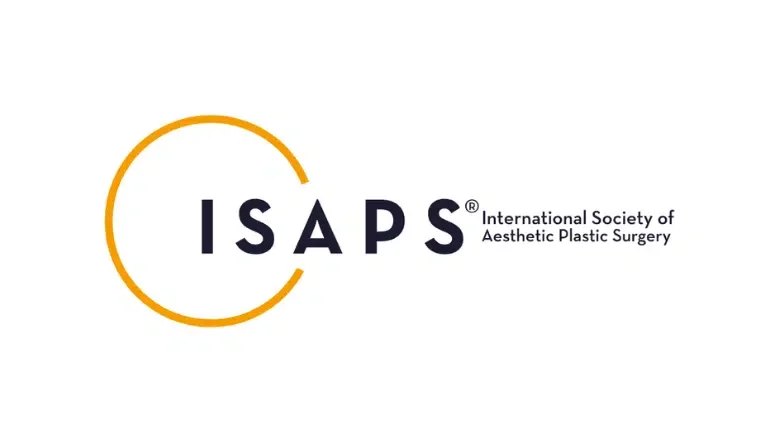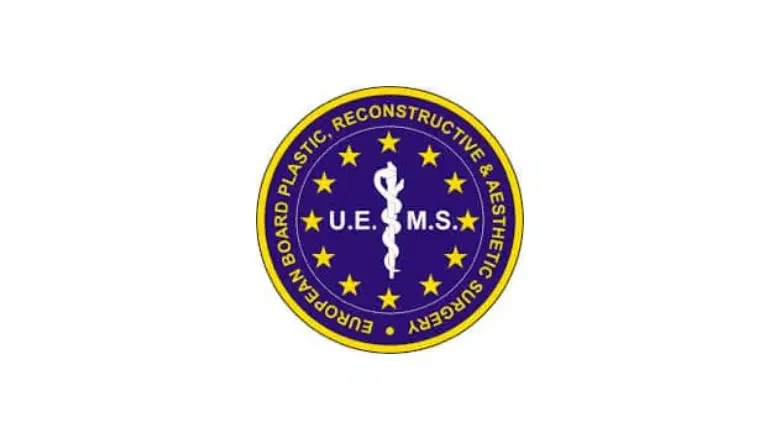An apron belly, also known as a ‘mother’s apron’ or pannus stomach, represents a prevalent issue that numerous individuals encounter, particularly following a substantial weight reduction. This condition is characterised by the presence of sagging abdominal skin coupled with surplus fatty tissue that drapes over the abdomen. The term ‘mother’s apron’ stems from its frequent occurrence among women post-childbirth. This physical change can be a source of discomfort and emotional distress for many.
RELATED: How To Get Rid Of Stomach Overhang & Belly Fat
What is an Apron Belly?
An apron belly is a physical condition that can emerge as a disheartening by-product of significant weight loss, often leaving individuals with a tangible reminder of their former body shape. This phenomenon is particularly prevalent among those who have undergone substantial changes in their physique, either due to dietary discipline and rigorous exercise or following pregnancy.
The core of this issue lies in the skin’s diminished elasticity, a situation that becomes more pronounced with age. When the skin stretches extensively – as in cases of pregnancy or previous overweight – it might lose its ability to retract back fully once the weight is lost. This results in the stomach area being a common site for the manifestation of an apron belly, characterised by sagging abdominal skin accompanied by residual fatty tissue that hangs over the lower abdomen.
RELATED: Can You Tighten Loose Skin after Weight Loss?
This physical alteration often leads men and women alike to perceive their body silhouette as less than ideal, as it may create the illusion of them still appearing larger than they actually are. The impact of an apron belly extends beyond aesthetic concerns. It can influence how clothes fit, potentially leading to discomfort due to chafing and rubbing against the skin. This condition is not just a physical issue; it profoundly affects emotional well-being too. Many individuals report that living with an apron belly significantly lowers their self-esteem and confidence.
The severity of an apron belly can vary greatly among individuals. For some, it might be a minor overhang that covers only the pubic area. However, in more pronounced cases, it can extend down to the upper thighs or even further. Each person’s experience with an apron belly is unique, and the extent of its impact can differ based on various factors, including the amount of weight lost, age, and skin elasticity.
RELATED: How to Tighten Loose Skin After Pregnancy
Causes of Apron Belly
An apron belly, a common concern for many, can be attributed to several key factors. The primary causes are significant weight loss and pregnancy, but other elements like genetics, the natural ageing process, and certain medical conditions also play crucial roles.
Pregnancy, especially when experienced multiple times, dramatically stretches the abdominal skin and muscles. This extensive stretching often results in excess skin that fails to retract fully post-childbirth, leading to the formation of an apron belly. The extent of this can vary depending on the individual’s skin elasticity and the degree of stretching during pregnancy.
Genetics is another influential factor. Some individuals have a genetic predisposition to accumulate weight in the abdominal area more than others. This predisposition can make them more prone to developing an apron belly, particularly if they experience significant weight fluctuations.
Ageing also significantly impacts the development of an apron belly. As we age, our skin naturally loses collagen and elastin – the proteins responsible for giving skin its strength and elasticity. This reduction occurs gradually each year, rendering the skin less capable of snapping back after being stretched, whether due to weight gain, pregnancy, or other causes.
Moreover, certain medical conditions can lead to the formation of an apron belly. Conditions that cause extreme fluctuations in weight, such as some hormonal disorders, can contribute to the development of this condition. Additionally, disorders like diabetes are also known to influence the distribution and accumulation of fat in the body, which can lead to a hanging belly.
Healthy Eating to Reduce Apron Belly: Nutritional Guidelines
Reducing an apron belly can be effectively supported by making mindful dietary changes, focusing on reducing calorie intake and choosing healthier food options. Here are some key guidelines to help in this process:
Avoid Ultra-Processed Foods
A significant concern in modern diets, especially in the UK, is the high consumption of ultra-processed foods. These foods are often high in refined carbohydrates, sugars, and unhealthy fats, which can contribute to the accumulation of belly fat. A study published in a prominent scientific journal highlighted a link between refined carbohydrate intake and increased belly fat. To counter this, it’s advisable to reduce the intake of such foods and opt for more natural, minimally processed options.
Increase Non-Starchy Vegetables
Incorporating a variety of non-starchy vegetables into your diet is an excellent way to reduce calorie intake while still consuming nutrient-dense foods. Options such as broccoli, leafy greens, courgettes (zucchini), mushrooms, and tomatoes not only provide essential vitamins and minerals but also help in maintaining a feeling of fullness, reducing the likelihood of overeating.
Boost Protein Intake
Protein plays a crucial role in weight management and muscle building, which can be beneficial in reducing an apron belly. Foods rich in protein, such as chicken, turkey, fish, eggs, and tofu, should be a staple in your diet. Protein aids in satiety, helps in muscle repair and growth, and can increase the metabolic rate, all of which contribute to a more toned abdominal area.
Choose Whole Grains
Opting for whole grains over refined grains is another effective dietary change. Whole grains like brown rice, wild rice, quinoa, and other wholegrain cereals are packed with fibre and nutrients. They help in maintaining stable blood sugar levels, reducing hunger, and supporting overall digestive health. Incorporating whole grains into your diet can help in further reducing body fat, especially around the abdomen.
Exercising for Overall Health and Reducing Apron Belly
Regular exercise is indisputably beneficial for overall health and well-being. However, when it comes to addressing an apron belly, it’s crucial to understand the most effective types of exercise for this specific concern.
Targeted fat loss, or spot reduction, has been a popular idea for those aiming to slim down specific body areas like the upper arms or inner thighs. The theory suggests that exercising a particular part of the body will lead to fat loss in that area. However, recent research has challenged this notion.
One notable study involving 200 participants with a Body Mass Index (BMI) over 30, conducted over 16 weeks, delved into this subject. The study focused on resistance training of the abdominal muscles and its impact on belly fat. The findings, verified through ultrasound imaging, indicated that working out the abs had no significant effect on reducing belly fat. This outcome is attributed to how the body burns fat. Stored fats, known as triglycerides, are utilised by the body for energy during exercise. However, this fuel is drawn from various parts of the body, not exclusively from the area being exercised.
Given these insights, the emphasis should be on overall cardiovascular exercise rather than isolated abdominal workouts like crunches and planks. Cardiovascular exercises, such as brisk walking, running, cycling, swimming, or aerobic classes, are effective in burning calories and reducing overall body fat. By engaging in regular cardio workouts, you can aim for an overall reduction in body fat, which subsequently can lead to a decrease in the apron belly.
The Role of Hydration in Reducing Apron Belly
Hydration plays a pivotal role in managing body weight and can be particularly effective in reducing an apron belly. Increasing water intake not only supports overall health but also aids in enhancing the body’s resting energy expenditure, which is the rate at which it burns calories while at rest.
The guideline for optimal water consumption is often based on body weight. A general rule of thumb is to consume half of your body weight in ounces of water daily. For instance, if you weigh 160 pounds, aim to drink 80 ounces of water each day. This amount helps in maintaining adequate hydration, supporting metabolic processes, and can aid in appetite control.
In addition to water, other beverages like black coffee and herbal teas can contribute to your daily fluid intake. These beverages are low in calories and can provide a slight boost to metabolism, although water should remain your primary source of hydration.
Conversely, it’s crucial to limit alcohol consumption when working towards reducing an apron belly. Alcohol is calorie-dense, containing nearly as many calories as pure fat. Most alcoholic beverages are also high in sugar, leading to the intake of empty calories. This can contribute significantly to the accumulation of belly fat. The sugar and calorie content in alcoholic drinks can counteract your efforts in managing an apron belly, making it more challenging to achieve your desired results.
